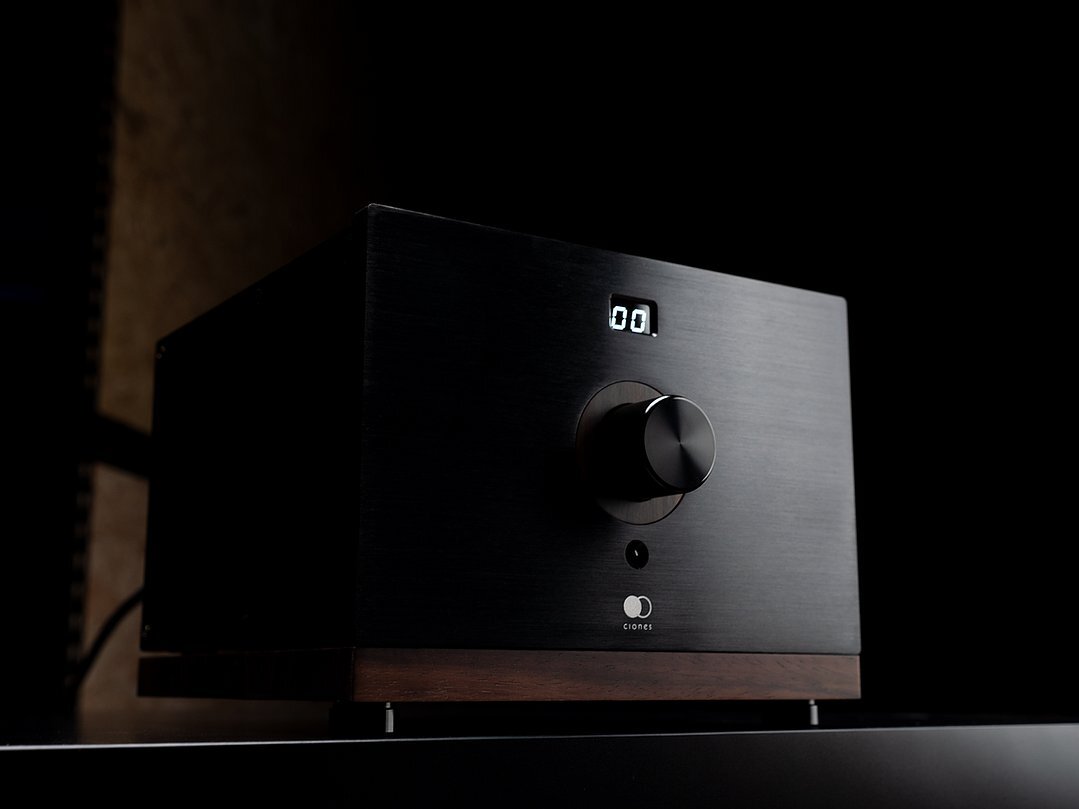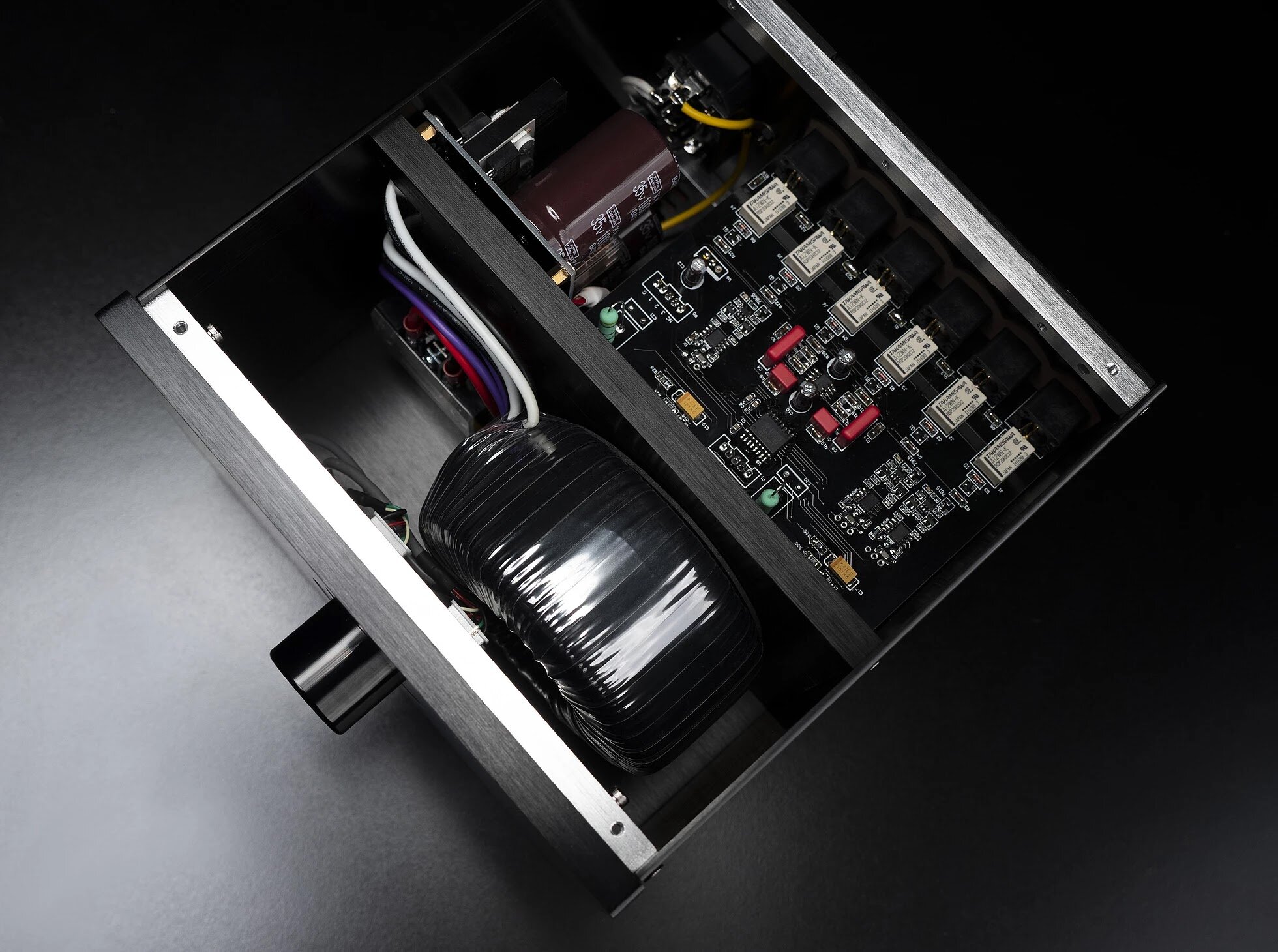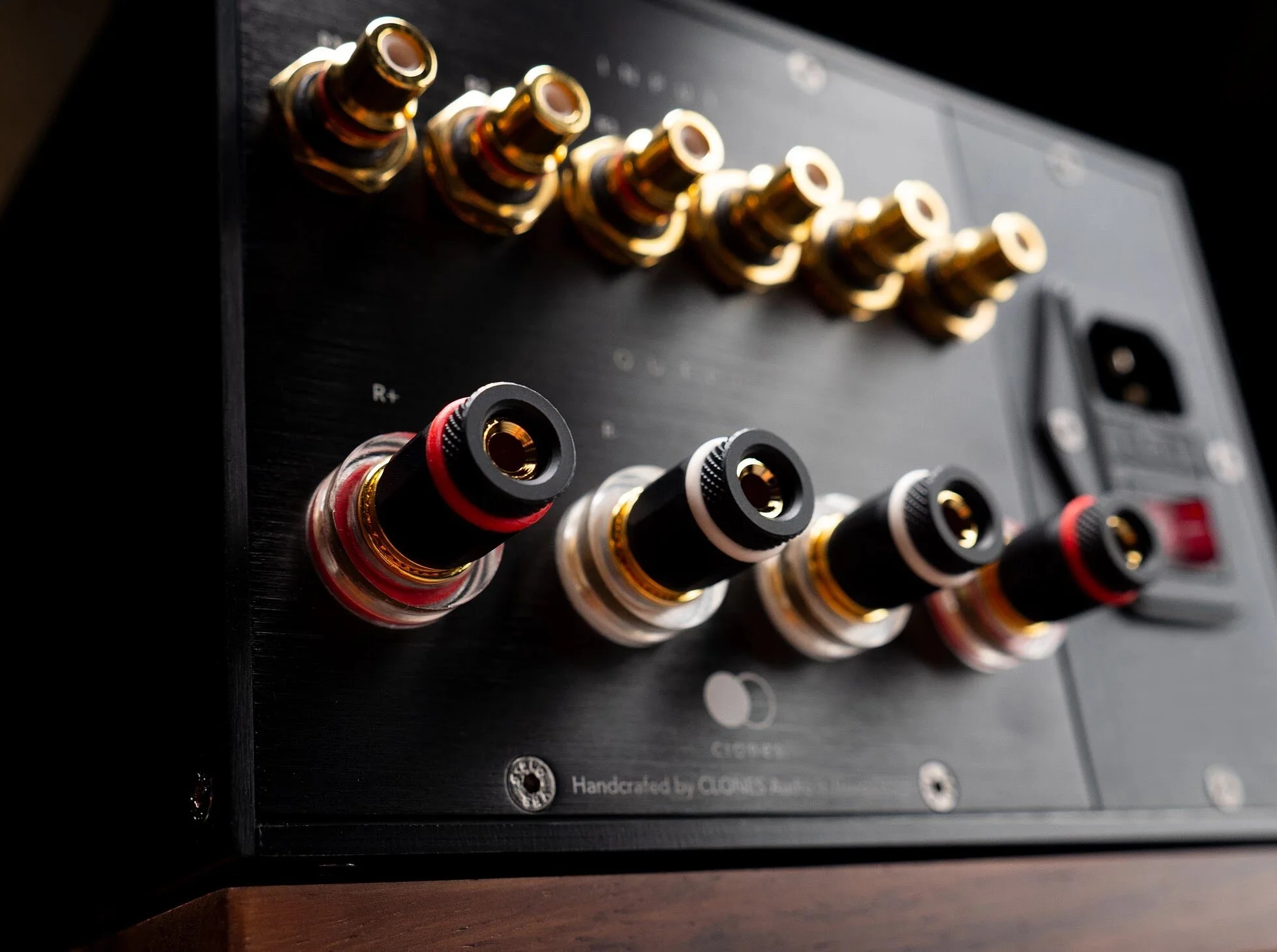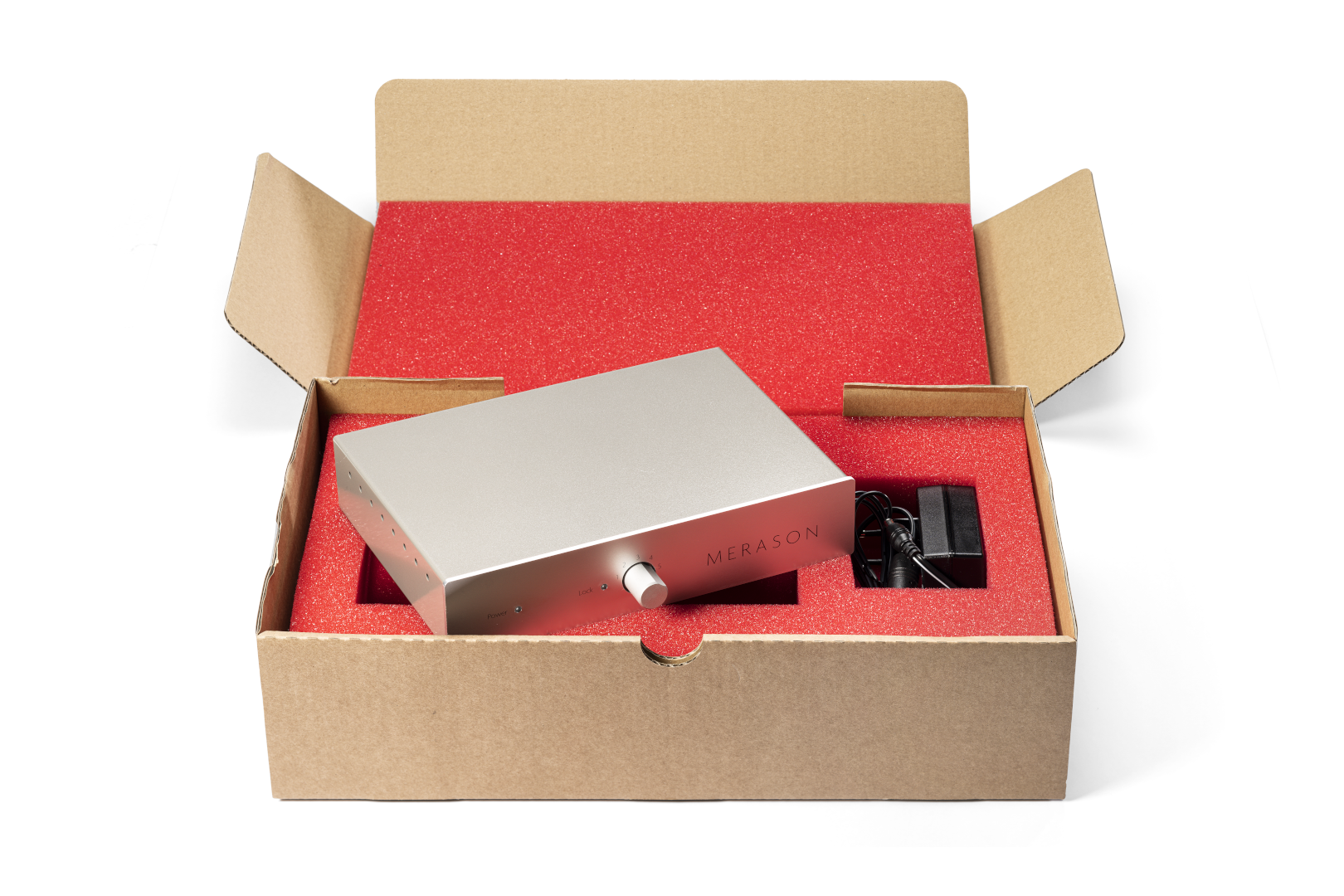One of the luxuries of reviewers is that we get exposed to a lot of new gear, and can occasionally share a new and notable product with our readers. I was first exposed to the Qln Prestige Three loudspeaker at the Capital Audio Fest 2019 where it was sharing a room with the Innuos Statement music server and the Vinnie Rossie L2i SE integrated amplifier (both of which I have reviewed quite favorably). It was one of the show’s better rooms and caught a lot of attention for three reasons. Number one was that it was beautifully simple in its implementation—server, integrated amp with built in DAC, and speakers. Number two was that Qln chose to display its Prestige Three model, which suited the room both size-wise and in regards to frequency extension, so the system synergized with the room as opposed to fighting it. Number three was that an enormous effort was put into setup, which resulted in a room where the speakers simply weren’t there, nor were the walls, ceiling, windows or anything else; the stage was engulfing and the sound enrapturing. Mark Sossa, Qln’s Sales Director, and I subsequently arranged a brief taste of Qln’s newly released, larger 2½-way, three-driver Prestige Five for this blog. Now that it has come and gone (sigh), I’d like to share my experience.
A brief peek into the history of Qln revealed that it was founded in 1977 and produced affordable, quality product, mostly in Europe. In 2003 it was sold. In 2013 it was re-purchased by one of the original owners, Mats Andersen,. I had the opportunity to ask Mr. Andersen to comment on the repurchase and his design principles.
Mats told me that he bought the brand back with the single-minded intention of building speakers that he “likes to listen to and that others would like and want to have for themselves…I do not make speakers from a marketing point of view; I have that freedom now. It is my company, my money (100%), and I have the freedom to do what I want. In my opinion, this freedom is what ultimately leads to making better speakers.”
His time away from Qln was spent refining his design and materials skills. “When I was away from the company (for 10 years), I learned a lot about driver design/technology and how different materials influence the sound. When I bought Qln back, my goal was to take our former philosophy (see below) and apply my improved knowledge/skill to make far more refined and well executed loudspeakers, while still offering the same value we were known for.” He exemplified his philosophy by stating, “I listen to music every day, so if I cannot have a speaker in my home and enjoy it every day for a year, it’s not a Qln.” Mats went on to explain: “There are three core principals guiding Qln’s design philosophy. Time alignment between drivers—slanted front baffle, truncated pyramid cabinet shape, minimum baffle area, Qboard sandwich damping technology that minimizes cabinet noise/sound.” Time-aligned, narrow baffles, low-resonance cabinets, low noise… sounded good to me without even listening to the speaker.
Qln’s current lineup includes a soon-to-be-released replacement for the Prestige One bookshelf ($5.5k’ish), the Prestige Three I heard at CAF2019 ($10k/$12k based on finish), the Prestige Five discussed here ($16k/$18.5k), and a high-efficiency 2-way floorstander for low-power tube amps ($5k). Piano burl walnut and maple are the upgraded finishes, while matte walnut and white satin are standard. Objectively, the Prestige Five cabinet is built and finished to very high tolerances: The projecting support feet are stable; the drivers and port are meticulously implemented; and the WBT Nextgen speaker binding posts firmly grip spade connectors. Subjectively, the Prestige 5s are not overly large, beautifully designed, attractively tapered and slanted back. They would surely land on the high end of the wife approval factor scale.
Mats also focused on the design of the Prestige Five. “The P5 utilizes a very sophisticated, custom-designed 184mm Kevlar mid/bass and drivers featuring an underhung magnet system for woofer and mid/woofer. This means that the voice coil is always in the magnetic gap, which ensures increased symmetry for the magnet’s force so that voice-coil inductance is unchanged by movement. Copper rings inside the magnetic gap are also used to decrease voice-coil inductance, provide better symmetry, and more current. “We also use a hard-wired crossover so that every crossover component is connected to the others without a secondary connection like a PCB.” The crossover is the epitome of simple and elegant design, hardwired with non-inductive capacitors bypassed with copper-film capacitors for the tweeter and flat-foil inductors for the mid/woofer. “This results in perfect timing within the crossover and low noise through the entire system.” Time alignment is a byproduct of both cabinet design and crossover implementation; the slanted cabinet only gets you part of the way there.
“The speaker is a 2½-way three-driver system,” Mats explained. “The woofer shares the same area as the mid/woofer up to 190Hz. The mid/woofer crossover point to the tweeter is 3800Hz. The crossover points then for the 2½-way system are 190Hz and 3800Hz respectively.” The speaker reaches down to 26Hz at -3dB and is an easy to drive 89dB-sensitive, 4-ohm load. The tweeter is a 25mm wide-surround, air-circ-magnet soft-dome design. The woofer is also 184mm, like the mid/woofer, but is a hard cone material with a special pattern in the cone piston to reduce distortion and increase phase coherency. Cabling is an in-house 12-core pure solid copper with polypropylene core and isolation. The cabinet is 39.37” tall,12.4” wide, 25.6” deep and weighs 90 pounds. Because of its tapered top and back-slanted enclosure, the Prestige Five looks smaller and narrower than it is.
Sonically, I would describe the Prestige Five as romantic and engaging, with a sweet well-rounded midrange, impressive bass, and airy highs that highlight extension and musicality over detail and accuracy. This is not to say that the Fives lack detail, but that they don’t highlight it as a primary objective. The emphasis is on their overall gestalt as opposed to highlighting any part of their presentation. Think Harbeth here. These speakers are about the music, not the critical listener looking to dissect equipment performance. The Fives also offer energetic pace and rhythm when called upon to provide them, and boy can they rock! Not only did they make me want to get up and dance, but they seemed to want to dance with me.
The bass extension and presentation of the P5 was quite something; taut, clean, impactful, and extended. No, the Prestiges don’t have the insane dynamic speed of a sealed system, but Mats’ use of a ported design is one of the best I’ve heard at this price point. There were times where I felt there was a hidden 8” driver inside the cabinet. The seamless integration with the mid/bass gives the speakers a sense of ease and natural projection that is alluring. I said romantic before, and I meant it. But I understand what Mats was saying about living with them for a year. They offer nothing offensive and can be listened to relentlessly with zero fatigue—just a great speaker. Be warned.
As a result of their low extension, careful setup is important. They P5s require room to breathe and extra effort to get the most out of them. But what you get with the Qln, if you invest the time, is a complete disappearing act. The stage goes big—I’m talking really tall, really deep, and really wide. The perception of instruments is from all around the speaker but never from the speaker. You can get lost in the reality of the stage they develop; and it adds tremendously to their overall performance. I’ve heard better stages for more, but for this price… yikes! I’m certainly not saying the P5s are in a class by themselves here, but tops in class for sure.
I have avoided commenting on a particular recording as they didn’t really have a genre they loved more than any other. However, if forced to say it… man, they loved Billie Eilish! Her voice was so rich and textured—truly delicious! But pretty much any recording with a voice, guitar, string, horn, or drum seemed to settle in and feel right at home on the Prestige Fives. I’d imagine they would also do double-duty for home theater with aplomb.
Accuracy and detail aficionados need not apply, but for those looking for an attractive speaker with a well-rounded, engaging presentation and incredible bass from a speaker of their size, the P5s are speakers you can listen to all day and the next. In a wide-open field of $15-$20k competition, some may think we don’t need yet another player. But the Prestige Five came to the U.S. ready to rumble, ready to shine, ready to play, and ready to prove itself. Find a Qln dealer and give them a listen.
Review link here














































